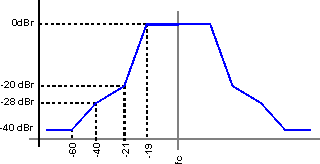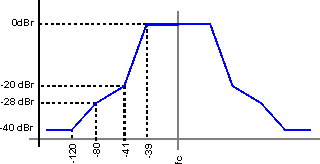IEEE 802.11ac Gigabit Wi-Fi
IEEE 802.11ac Gigabit Wi-Fi was introduced to provide Very High Throughput, VHT data up to 7 Gbps within the 5.8 GHz ISM band on wireless LANs.
WiFi IEEE 802.11 Types Includes:
Standards
802.11a
802.11b
802.11g
802.11n
802.11ac
802.11ad WiGig
802.11af White-Fi
802.11ah Sub GHz Wi-Fi
802.11ax Wi-Fi 6
802.11be Wi-Fi 7
802.11 topics:
Wi-Fi IEEE 802.11 basics
Standards
Wi-Fi Alliance generations
Security
Wi-Fi Bands
Router location & coverage
How to buy the best Wi-Fi router
IEEE 802.11ac was introduced to further improve the speed of wireless LANs as well as the link speed between smartphones, Wi-Fi enabled televisions, game consoles and a host of other Wi-Fi enabled electronic devices.
IEEE 802.11ac Wi-Fi provided what was termed Very High Throughput, VHT data transfer speeds of a minimum of 1 Gbps and tops speeds of 7 Gbps.
Using speeds of this order, wireless LANs and general wireless communications would be able operate without the local area network or Wi-Fi link becoming the limiting factor.
Within IEEE 802.11ac a number of key features were introduced, and to achieve the top speeds mentions, these needed to be enabled before the very high throughput data rates could be achieved on the WLAN or wireless communications link.
802.11ac Gigabit Wi-Fi features
Some of the key or highlight features are tabulated below:
| IEEE 802.11ac Gigabit Wi-Fi Features | |
|---|---|
| Parameter | Details |
| Frequency band | 5.8 GHz ISM (unlicensed) band |
| Max data rate | 6.93 Gbps |
| Transmission bandwidth | 20, 40, & 80 MHz 160 & 80 + 80 MHz optional |
| Modulation formats | BPSK, QPSK, 16-QAM, 64-QAM 256-QAM optional |
| FEC coding | Convolutional or LPDC (optional) with coding rates of 1/2, 2/3, 3/4, or 5/6 |
| MIMO | Both single and multi-user MIMO with up to 8 spatial streams. |
| Beam-forming | Optional |
When 802.11ac was first launched, not all the final capabilities could be included in the first products. Many products had been developed to meet the basics of the draft specification prior to its proper launch. To address this and gain clarity in the marketplace, the Wi-Fi Alliance separated the launch into two phases: Wave 1 and Wave 2.
The Wi-Fi Alliance commenced certifying Wave 1 802.11ac electronic devices, manufactured to IEEE 802.11ac Draft 3.0 from mid 2013. Then in 2016, the Alliance started to certify Wave 2 electronic devices . By this time, additional features including MU-MIMO, 160 MHz channel width support, support for more 5 GHz channels, and four spatial streams using four antennas (compared to three in Wave 1 and 802.11n).
When looking for high performance electronic devices like Wi-Fi routers, t is best to check that they conform to Wave 2.
IEEE 802.11ac Gigabit Wi-Fi technologies
The IEEE 802.11ac Gigabit Wi-Fi standard utilises a number of techniques that have been utilised within previous IEEE 802.11 standards and builds on these technologies, while adding some new techniques to ensure that the required throughput can be attained.
- OFDM: The IEEE 802.11ac standard utilises OFDM that has been very successfully used in previous forms of 802.11. The use of OFDM is particularly applicable to wideband data transmission as it combats some of the problems with selective fading.
Note on OFDM:
Orthogonal Frequency Division Multiplex, OFDM is a form of signal format that uses a large number of close spaced carriers that are each modulated with low rate data stream. The close spaced signals would normally be expected to interfere with each other, but by making the signals orthogonal to each other there is no mutual interference. The data to be transmitted is shared across all the carriers and this provides resilience against selective fading from multi-path effects.
Read more about OFDM, Orthogonal Frequency Division Multiplexing.
- MIMO and MU-MIMO: In order to achieve the required spectral usage figures to attain the data throughput within the available space, the spectral usage figure of 7.5 bps/Hz is required. To achieve this, MIMO is required, and in the case of IEEE 802.11ac Wi-Fi, a form known as Multi-User MIMO, or MU MIMO is implemented.
MU-MIMO enables the simultaneous transmission of different data frames to different clients. The use of MU-MIMO requires that equipment is able to utilise the spatial awareness of the different remote users. It also needs sophisticated queuing systems that can take advantage of opportunities to transmit to multiple clients when conditions are right.Note on MIMO:
MIMO is a form of antenna technology that uses multiple antennas to enable signals travelling via different paths as a result of reflections, etc., to be separated and their capability used to improve the data throughput and / or the signal to noise ratio, thereby improving system performance.
Read more about MIMO technology
- Error correction coding: The advances in chip manufacturing technology have enabled designers to take advantage of additional levels of processing power when compared to previous implementations of the 802.11 standards. This has enabled the use more sensitive coding techniques that depend on finer distinctions in the received signal. In addition to this more aggressive error correction codes that use fewer check bits for the same amount of data have been utilised within the 802.11ac format
- Increased channel bandwidth: The previous versions of 802.11 standards have typically used 20 MHz channels, although 802.11n used up to 40 MHz wide channels. The 802.11ac standard uses channel bandwidths up to 80 MHz as standard with options of 160MHz or two 80MHz blocks. To achieve this it is necessary to adapt automatic radio tuning capabilities so that higher-bandwidth channels are only used where necessary to conserve spectrum
The IEEE 802.11ac VHT Wi-Fi offers significant advantages over the previous incarnations of the 802.11 standard. It offers backwards compatibility with previous versions and this will enable it to be introduced in the existing Wi-Fi ecosystem with the minimum of disruption.
Physical layer RF
The key RF features of the 802.11ac physical layer are tabulated below::
| IEEE 802.11ac Physical Layer | ||
|---|---|---|
| Feature | Mandatory | Optional |
| Channel bandwidth | 20MHz, 40 MHz, 80 MHz | 160 MHz, 80+80 MHz |
| FFT size | 64, 128, 256 | 512 |
| Data subcarriers / Pilots | 52 / 4, 108 / 6, 234 / 8 | 468 / 16 |
| Modulation types | BPSK, QPSK, 16-QAM, 64-QAM | 256-QAM |
| Spatial streams & MIMO | 1 | 2 to 8 TX antenna beam-forming, STBC Multi-user-MIMO |
In terms of the use of MIMO, this standard is able to use up to eight spatial streams as well as using multiple user MIMO where the different streams can be used to support a number of different users and provides a form of multiple access scheme.
As an example, consider a situation where the transmitter has four antennas. Four streams from each can pass data to the four receive antennas. Alternatively two users can be supported, each with two streams.
It is also worth noting that the top data rate is only achieved using 256-QAM, 160 MHz bandwidth and MIMO with all eight spatial streams.
However, to achieve the highest data rates, reduces the number of channels that are available, even at 5.8 GHz. As a comparison, when using 802.11a, a total of 24 non-overlapping channels is available, but when 802.11ac is used in its high data rates mode, it is only possible to accommodate two 80MHz channels or just one 160 MHz channel.
Spectral mask
Like other transmission standards, 802.11ac is given a spectral mask into which the emitted signals must fall. This spectral mask details the maximum level of spurious signals and noise that are permissible.
The spectral mask differs between the various bandwidths and also according to the offset from the centre frequency.


It can be seen that the roll-off from the 0dBr to the -20dBr points still occurs over a 2 MHz bandwidth, the same bandwidth for the 40 MHz mask. This means that in terms of the percentage of the signal bandwidth the roll-off is twice as steep over these points.
Another key parameter within the spectral mask is the ultimate levels reached as the offset from the centre frequency increases..
| IEEE 802.11ac Spectral Mask - Ultimate Levels Reached | ||
|---|---|---|
| Signal bandwidth | Offset Frequency | Ultimate Signal Level |
| 20 MHz | ≥ 30 MHz | Max -40 dBr or -53 dBm / MHz |
| 40 MHz | ≥ 60 MHz MHz | Max -40 dBr or -56 dBm / MHz |
| 80 / 160 MHz | ≥ 120 / 240 MHz | Max -40 dBr or -59 dBm / MHz |
Measured with 100 kHz resolution bandwidth and 30 kHz video bandwidth. dBr = dB relative to the maximum spectral density of the signal.
Physical layer frame
As with other 802.11 standards, there is a Physical Layer Convergence Protocol, PLCP and this defines a PLCP Protocol Data Unit, PPDU. For 802.11ac, this has been defined to be backward compatible with 802.11a and 802.11n which may also use the 5.8 GHz unlicensed ISM band.

There are various fields within the frame structure:
- L-STF: This short training field is two symbols in length and it is transmitted for backwards compatibility with previous versions of 802.11. The field is duplicated over each 20 MHz sub-band with phase rotation. The subcarriers are rotated by 90° or 180° in some sub-bands to reduce the peak to average power ratio.
- L-LTF: This is a legacy long training field, and is two symbols long. It has many of the same properties as the L-STF including the transmission criteria, being transmitted in sub-bands and those of phase rotation.
- L-SIG: This field is one symbol long and it is transmitted in BPSK. Like the L-STF and L-LTF it is a legacy field.
- VHT-SIG-A: This is an 802.11ac field and consists of one symbol transmitted in BPSK and a second in QBPSK, i.e. BPSK rotated by 90°. This mode of transmission enables auto-detection of a VHT transmission. The filed contains information to enable the receiver to correctly interpret the later data packets. Information including he bandwidth, number of MIMO streams, STBC used, guard interval, BCC or LDPC coding, MCS, and beam-forming information.
- VHT-STF - VHT Short Training Field : This 802.11ac field is one symbol long and is used to improve the gain control estimation for MIMO operation.
- VHT-LTF - VHT Long Training Field: The long training fields may include 1, 2, 4, 6, or 8 VHT-LTFs. The mapping matrix for 1, 2, or 4 VHT-LTFs is the same as in 802.11n whereas the 6 and 8 VHT-LTF combinations have been added for 802.11ac.
- VHT-SIG-B: This field details payload data including the length of data and modulation coding scheme for the multi-user mode. Bits are repeated for each 20 MHz sub-band
When IEEE 802.11ac came onto the market, it was quickly adopted, although testing presented some interesting challenges in view of the use of MIMO, OFDM and its other features.
After 802.11ac was introduced, it quickly became the “norm” for wireless LANs as it was able to provide very high throughput transfers of data.
 Written by Ian Poole .
Written by Ian Poole .
Experienced electronics engineer and author.
Wireless & Wired Connectivity Topics:
Mobile Communications basics
2G GSM
3G UMTS
4G LTE
5G
Wi-Fi
Bluetooth
IEEE 802.15.4
DECT cordless phones
Networking fundamentals
What is the Cloud
Ethernet
Serial data
USB
LoRa
VoIP
SDN
NFV
SD-WAN
Return to Wireless & Wired Connectivity



